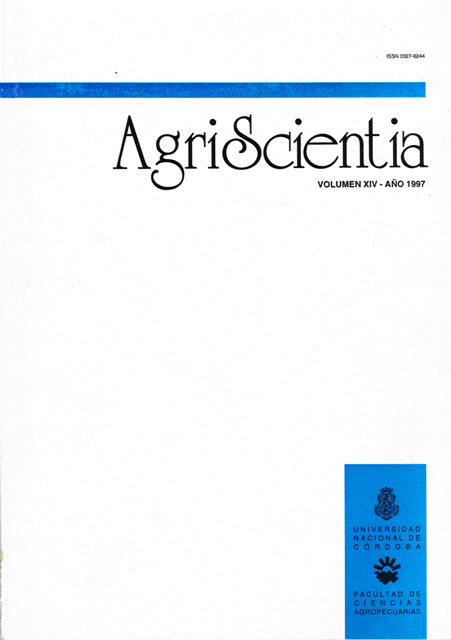Repellent activity of different plant extracts on Tribolium castaneum (Herbst)
Main Article Content
Abstract
The objective of this paper was to determine the repellent activity of different plant extracts with bioassays on Tribolium castaneum, a pest of stored grains. In a food preference chamber, crude extracts in ethanol, hexane, and chloroform of Chenopodium ambrosioides, Larrea divaricata, Artemisia verlotorum, Ximena americana, and Schkuhria pinnata were evaluated for their repellent effect. All extracts reduced the total number and the percentage of insects in treated food but to different degrees. Thus, the extract of S. pinnata in chloroform had the highest repellent activity, followed by the extracts of A. verlotorum in chloroform, L. divaricata in ethanol, C. ambrosioides in chloroform, and X. americana in ethanol.
Article Details

This work is licensed under a Creative Commons Attribution-ShareAlike 4.0 International License.
How to Cite
References
Champ, P. R., & Dyte, C. E. (1976). Informe de la prospección mundial de la FAO sobre susceptibilidad a los insecticidas de las plagas de granos almacenados. FAO Plant Production and Protection Series N° 5. Roma: FAO.
FAO. (1974). Métodos recomendados para la detección y medición de la resistencia de plagas agrícolas a los plaguicidas: Método provisional para gorgojos adultos e importantes en cereales almacenados con malatión o lindano. Método N° 13. Boletín Fitosanitario, 22, 127-137.
FAO. (1976). Informe de la prospección mundial sobre susceptibilidad a los insecticidas de las plagas en almacenamiento. Plant Protection Bulletin, 22, 101-137.
Ikan, R. (1969). Natural products: A laboratory guide. Academic Press.
Jacobson, M. (1958). Insecticides from plants: A review of the literature, 1941-1953. Agriculture Handbook N° 154. United States Department of Agriculture.
Jilani, G., & Malik, M. M. (1973). Studies on neem plant as repellent against stored grain insects. Pakistan Journal of Scientific and Industrial Research, 16, 251-254.
Jilani, G., & Su, H. C. F. (1983). Laboratory studies on several plant materials as insect repellents for protection of cereal grains. Journal of Economic Entomology, 76(1), 154-157.
Jilani, G., Saxena, R. C., & Rueda, B. P. (1988). Repellent and growth-inhibiting effects of turmeric oil, sweet flag oil, neem oil, and "Margosan-O" on red beetle (Coleoptera: Tenebrionidae). Journal of Economic Entomology, 81(4), 1226-1230.
Laudani, H., & Swank, G. R. (1954). Laboratory apparatus for determining repellency of pyrethrum when applied to grain. Journal of Economic Entomology, 47(6), 1104-1107.
Munakata, K. (1977). Insect antifeedants of Spodoptera litura in plants. En P. A. Hedin (Ed.), Hostplant resistance to pests (pp. 23-47). American Chemical Society, Symposium Series 62.
Pettei, M. J., Miura, I., Kubo, I., & Nakanishi, K. (1978). Insect antifeedant sesquiterpene lactones from Schkuhria pinnata: The direct obtention of pure compounds using reverse-phase preparative liquid chromatography. Heterocycles, 11, 471-479.
Talukder, F. A., & Howse, P. E. (1993). Deterrent and insecticidal effects of extracts of pithraj, Aphanamixis polystachya (Meliaceae), against Tribolium castaneum. Journal of Chemical Ecology, 19, 2463-2471.
Talukder, F. A., & Howse, P. E. (1994). Laboratory evaluation of toxic and repellent properties of the pithraj tree, Aphanamixis polystachya Wall & Parker, against Sitophilus oryzae (L.). International Journal of Pest Management, 40(3), 274-279.
Trease, G. E., & Evans, W. C. (1989). Farmacognosia. Interamericana McGraw-Hill.
Van Emden, H. F. (1977). Control de plagas y su ecología. Cuadernos de Biología. Ediciones Omega.





